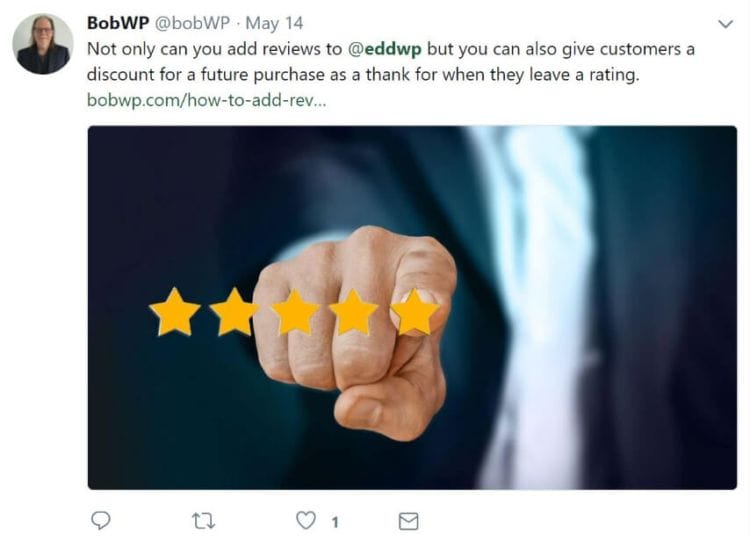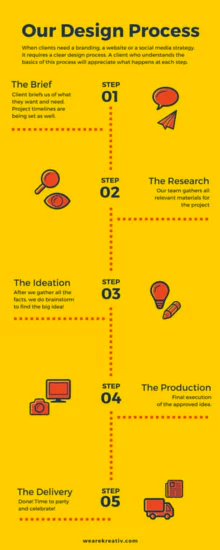
Are you stumped on how to write compelling digital product copy and descriptions? How do you feature your podcast, e-course, plugin, etc. to its fullest advantage? What’s the best way to make your digital product stand out in a competitive market?
The good news is that you don’t have to be an English or marketing major to be able to write great digital product copy. With a little bit of creativity and passion, you can attract online interest and convert visitors into customers.
Before you start writing
Is my writing right for my audience?
It’s tempting to dive in and start writing, but before you begin, think about who your potential customers are. Is your digital product or service for for beginners, or can veteran users benefit? How do you reach these different audiences? Can you talk to both audiences at the same time?
Beginners need less technical jargon. Provide clear and simple instructions that let them know that your product won’t be over their heads, and it will deliver the quality results that they desire. Congratulate them on trying something new, and encourage their efforts.
Veteran users need to know that you respect their expertise, and you want to give them a product that will capitalize on their experience and take them to the next level. Stress that your offering is a time saver that will help them to enhance their productivity.
Be careful of stating that your product is for everyone with no backup explanations, otherwise it sounds like you’re trying to be all things to all people. If you have that dynamic item that reaches across the board, stress that your product grows with user. There are different levels, add-ons, or modules that make your item scalable to where your prospective consumer is at the moment.
Get inspiration from industry leaders you admire
Whether you are selling audio and music, eBooks, or something less tangible like consulting services, there are brand leaders where you can draw inspiration. Create an electronic swipe file that will help you to get those creative juices flowing.
What is a swipe file? It’s a collection of brand cuttings that appealed to you. The file(s) could include photography, logos, ad copy, etc. Organize these items by creating a Pinterest board, saving screen caps in a file, or setting up a Trello board. The items don’t have to be from the same type of digital product you’re selling, or even a digital product at all. Great digital product copy inspiration comes from many sources, including hard copies that arrive in the mail.
Just a word of caution, inspiration is awesome, but plagiarism…not so much. Make sure that you aren’t copying word-for-word or heavily paraphrasing another person’s work.
T.S. Eliott summed up outside inspiration best when he commented on Shakespeare’s thirty seven plays, most of which were based upon outside sources, “We can say of Shakespeare, that never has a man turned so little knowledge to such great account.” In short, for a guy without a lot of original ideas, Shakespeare is one of the most successful playwrights of all time.
Get inspiration from your competitors
Research is incredibly important. It helps you understand your market, and your product’s place in that market. By looking at how your competitors write about their products, you can learn what kind of language they use, how they speak to their prospective customers, and how they communicate about their product offering. Take note, but remember not to copy them (don’t forget what I said above about plagiarism)!
Passion for your digital product
There are so many possibilities when it comes to selling popular digital products online. Don’t be afraid of being your own biggest cheerleader. It’s ok to brag. If you aren’t excited about your digital product or service and its benefits, no one else is going to be.
So how exactly does that excitement transfer over into the written word? Without trying to sound too much like your 8th grade Language Arts teacher, action verbs and descriptive adjectives are your best tools. Not a wordsmith? No problem. There are great online resources like Vertical Response to help you pick the most descriptive words with value, and at the same time avoid the pitfalls of bland or overused ones.
When you’re ready to get started
Keywords are the key to great digital product copywriting
Everyone wants their digital product to rank on the front pages of the most popular search engines. Search engine optimization, also known as SEO, helps your potential customers to find you. Search engine algorithms are ever changing, so this is one area where it’s important to stay on top of current trends, and to adjust your product copy accordingly. What worked in 2013 is not necessarily going to work in 2018.
Here are some of the most important things to consider with keywords:
- Get advice such as free newsletters and articles from easy to understand leaders in SEO.
- Use keyword research tools.
- Long-tail keywords are one of the best ways that startups can stand out in a niche market.
- Listen to what your customers say about how they found you. Can you capitalize on using keywords that address your customers’ pain points?
The balancing act of the elevator pitch
You may have as little as 5-10 seconds to keep visitors’ attention, and convert them from a potential customer to a paying customer. A compelling elevator pitch is what does the trick. Your pitch should be three or so sentences that describe the value and benefits of your product in a nutshell.
After your initial elevator pitch, you should follow up with bullet points that outline in more detail the features of your product. This dual approach gives the customer what they want in easy to find format.
This advice is all the more true when you consider the number of visitors to your site on the smaller screens of mobile devices. According to Statista, “In 2018, 52.2 percent of all website traffic worldwide was generated through mobile phones, up from 50.3 percent in the previous year.” On the smaller screen, it’s all about clarity. If you’re too wordy, or info isn’t easy to find, it will be harder to convert that customer.
Benefits vs. features
There’s a lot you can learn from local brick and mortar businesses that sell intangible goods. To quote one of my first employers, a successful private school principal, “People don’t buy a private education. They buy the benefits associated with that education. They can’t hold our math or history classes, but what they can see are our well-rounded students who can talk with anyone about their confidence in their abilities to tackle problems, articulate their views, and vision of their place in the future. ”
What it all comes down to is giving value to the customer besides the basics of the item being sold. In a crowded field of similar services, what extra value do you provide that makes you stand out?
When describing your digital product or service, not only bullet point out the features (what your product does), but also briefly explain why those features benefit the customer:
- Does the product save time, money, or even both?
- Is the product of higher quality, for the price point?
- Is it easily updatable with little hassle?
- Are you able to level up to a new skill set that enhances your career by using this product?
- Do you have a guarantee and refund policy?
- Did you create a demo that makes using your product easier, providing additional value to your customer?
- Is it easy to obtain customer support before, during, and after the purchase?
We see our customers as invited guests to a party, and we are the hosts. It’s our job every day to make every important aspect of the customer experience a little bit better.Jeff Bezos
Testimonials enhance the buzz for your digital product
Everyone relies on other consumers’ experiences. How many times have you used Yelp, TripAdvisor, or Facebook ratings to make a purchase decision? Making testimonials work for digital products is a must do, and it couldn’t be easier.
Here are 4 easy ways to capitalize on customer testimonials:
- Ask a customer if you can quote them, and link to their website. Hopefully they will link to you as well. Never lose an opportunity for a backlink.
- Don’t just have testimonials on a testimonials page, or a star system that delivers the most recent feedback. Include a customer testimonial at the bottom of every product description.
- Use those customer testimonials to capitalize on the pain point your product is addressing. Work that pain point into your product description to improve upon SEO.
- Embed a Tweet of a customer praising your product or customer service. It’s a great way that new customers are assured of the testimonial’s authenticity.

Sometimes the best words aren’t words at all
There’s a lot of truth in that old saying, “A picture is worth a thousand words”. Never underestimate the value of a compelling photo, graphic, or video that highlights what your digital product can do.
Infographics are a great way of telling your story. You can do product comparisons, highlight benefits in pricing tiers, or showcase milestones. Think of them as graphic bullet points. Take a look at this template from Canva, which is a great example of using an infographic to highlight the process of a company who sells a service:
The best news is that you don’t have to be a graphic designer to create an infographic like the one above. There are online tools that utilize templates and drop drag graphics to up your visual appeal game. Even better, many of these options are free or relatively inexpensive. Check out services like Canva, PicMonkey, Snappa, or DesignBold.
Clear and easy calls to action
Hurrah! You’ve convinced an online visitor that your digital product is what they are looking for. Don’t make it frustrating for them to engage with you.
Sure, sometimes people are looking to buy right away, but other times they want to think about it and come back. They also may have questions even if it seems to you the answers are all in the product descriptions. Sometimes potential customers just need that human contact before they take the next step.
Calls to action aren’t just a “buy now” button or a coupon code that flashes across the screen. They are also easy to find items (live chat, email, contact box) that state, “Have questions? We are here to answer.”
There’s an opportunity to give added value by telling potential customers that they can sign up for a free newsletter, webinars, eBooks, etc. regardless of purchase. They can follow you on social media for additional tips. Don’t assume they’ll know instinctively to do this. Give them that option in places other than your footer, or contact us page. It shows that you’re willing to go that extra step beyond.
The home stretch
Proofreading
Internet infamy and memes await those who don’t proofread, or who only spellcheck. Before you hit publish, check, and check again. Spellcheck and grammar check won’t catch everything. Take a break and come back to your copy. That break is crucial in preventing you from mentally filling in words that may not be there.
Having a pair of outside eyes review your copy is one of the most important things you can do to avert disaster. You may think you’re clear, but outside perspective will point out things you may have missed or never considered. Ask a friend, family member, or colleague to triple-check your copy.
Be your own copy editor
Seriously consider writing several versions of copy for one product. You might find you end up with 3 okay-ish versions of copy that, when sliced up and re-worked together in a new arrangement, you uncover one heck of a powerful product description!
David Ogilvy, considered by many as the founding father of modern advertising, actually referred to himself as a lousy copywriter. Ogilvy would rewrite his copy several times over before he decided on the final version, and then he would perform some market research on that copy by asking people in the agency to read it. Don’t settle with your first iteration – keep writing until you feel like you’ve cracked it, and then show it to someone else for feedback.
Fight that imposter syndrome
David Ogilvy did. Believe in yourself. You can write your own insanely good digital product copy. You can be your own copywriter. Be the storyteller of your products and your brand. Don’t be afraid to get out there and experiment with new ideas. You have the ability to pick and choose, as well as change direction at anytime.
What’s the best success you’ve had when it comes to writing great digital product copy? Do you have any top tips or suggestions that we missed? Do you have a favorite resource that you use to improve your digital product copy? Let us know in the comments what has worked for you, and any advice that you’d like to share.
Illustration by Jessica Johnston.
Using WordPress and want to get Easy Digital Downloads for free?
Enter the URL to your WordPress website to install.
Disclosure: Our content is reader-supported. This means if you click on some of our links, then we may earn a commission. We only recommend products that we believe will add value to our readers.

Another great article! I think video and infographics are generally the best way to get across a message clearly and concisely, especially to a multi-lingual audience :).
Great point! Having literally just gotten off a zoom call where I was translating English to Spanish visual aids are key.